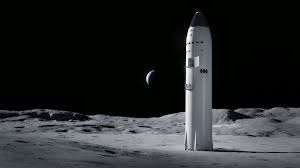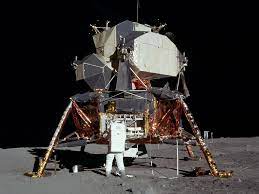"Humans on mars by 2050 and how we get there," -- Olu Thomas, 8th Grade
Before I get into the details of space policy and the implications of SpaceX’s most recent flight, here is a little about the company. Founded in 2002 by Elon Musk, the commercial space team began as a small rocket manufacturer and launching company. Starting with their Falcon 1 launch vehicle, created with the interest of being able to reuse the booster. The reason behind this? Cost. Building a spacecraft is expensive, and if you can only build it once that would save lots of expenses. However, they never achieved this with Falcon 1 but eventually were able to with the Falcon 9.
Later in 2008, SpaceX was nearly out of business, Elon Musk poured every last dollar he had into the company, but it was too little too late. Luckily for them, they received a last-minute investment from NASA. These days, SpaceX is now reliably flying their Falcon 9 launch vehicle, and are starting to really swing with the rocket, having had perfect flights since March 2020 with only an engine cleaning fluid issue. Elon Musk first announces the possibility of a ‘mars colony’ in his tweet about pursuing SpaceX to hopefully get humans to Mars by 2050, which at this rate is likely to happen. Starship, the rocket SpaceX intends to use to get humans to mars is a massive rocket that when stacked on the launch pad is the tallest thing for hundreds of miles
The flight Inspirations 4 was a privately chartered flight on the Falcon 9 launch vehicle, the third flight of B1062, and the first flight of crew dragon resilience. The Inspiration 4 crew consisted of Jared Isaacman, Dr. Sian Hayley Proctor, Hayley Arceneaux, and Cristopher Steven Sembroski. The flight orbited the Earth 46 times, and was on orbit for 2 days, 23 hours, 3 minutes, and 53 seconds. The goal of the flight was to raise money and awareness for St. Jude Children's Hospital. According to NonprofitPro, the flight raised over 200 million. One of the crew members, Hayley Arceneaux is a cancer survivor herself and now works with children with chronic illnesses.
The FAA approving this flight shows a lot of faith in SpaceX, and that is what they need, as 5 years ago no one in their right mind would have let four civilians fly to space—especially on such a new launch vehicle. SpaceX is on the right track but they need to continue showing their competency with ground crew, systems, and all other aspects of spaceflight for the FAA to approve Starship.
NASA is showing promising trust in SpaceX, choosing them to land the next humans on the moon. This is a great achievement for the company, beating out their old steady competitors, the same companies that made the lunar module for the late great Apollo missions. SpaceX and NASA’s partnership is making history by going to the Moon with the Artemis program in the same way the great Apollo missions did, but hoping to be much cheaper. However,so far that is not going great, with an estimated 2 billion dollar price tag.
The FAA approving this flight shows a lot of faith in SpaceX, and that is what they need, as 5 years ago no one in their right mind would have let four civilians fly to space—especially on such a new launch vehicle. SpaceX is on the right track but they need to continue showing their competency with ground crew, systems, and all other aspects of spaceflight for the FAA to approve Starship.
NASA is showing promising trust in SpaceX, choosing them to land the next humans on the moon. This is a great achievement for the company, beating out their old steady competitors, the same companies that made the lunar module for the late great Apollo missions. SpaceX and NASA’s partnership is making history by going to the Moon with the Artemis program in the same way the great Apollo missions did, but hoping to be much cheaper. However,so far that is not going great, with an estimated 2 billion dollar price tag.
NASA is hoping for this lunar program to end differently than the last, in choosing SpaceX to land on the moon they are showing this. SpaceX will likely be able to deliver NASA with a system that can land humans on the moon for under 100 million dollars. Which, compared to the almost 30 billion price tag for one lunar launch in the 70s.




